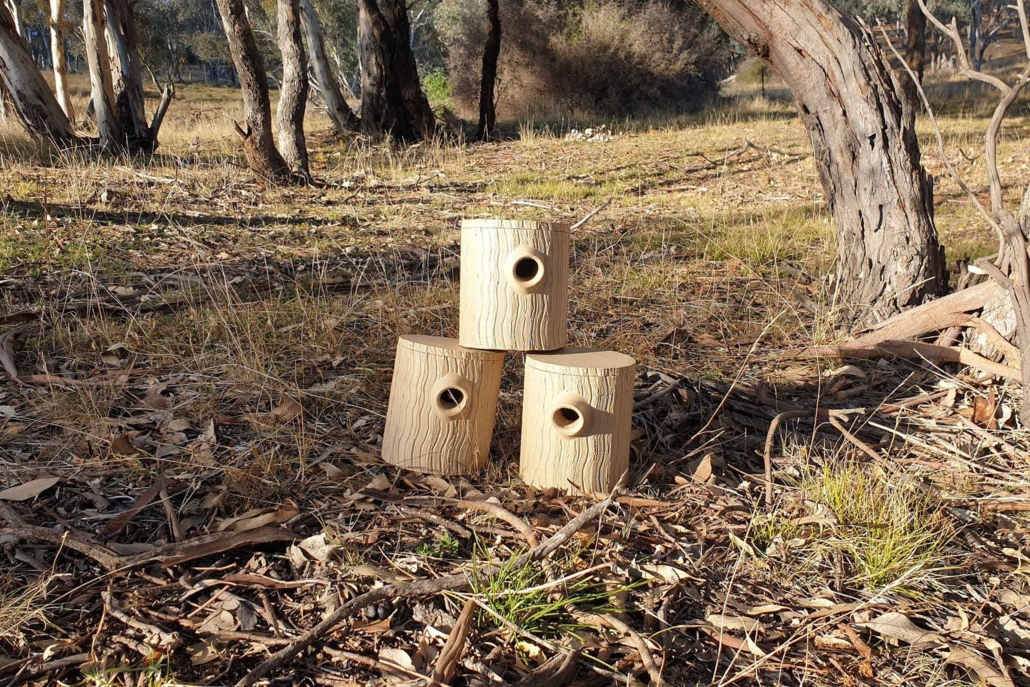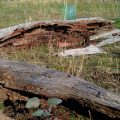Hollow Hollow, is anyone home?
Published 15th October 2021. Written by Maddison O’Brien
Just for a minute, imagine you’re a mature, powerful owl. You have found a mate and need somewhere to nest. You glide and glide, but you can’t find any trees with hollows big enough for you and your future chicks. Possums or cockatoos already occupy some hollows, you see. The tree you nested in last year has mysteriously disappeared. What can you do?
Sadly, this is a reality for an increasing number of animals. Hundreds of native wildlife species rely on hollows to nest, breed, shelter, and feed in Australia. This includes 31% of native mammals and 15% of native birds, several of which are vulnerable or endangered. The fact is, hollow-bearing trees are disappearing, and new trees can take as long as 180-120 years to form new hollows.
Nesting boxes have come into the mainstream as a potential solution for this problem. Still, ongoing research suggests these nesting boxes aren’t sufficient for most animals and provide limited protection from an increasingly erratic climate. For the most part, these standard wooden boxes lack tested design features and need ongoing maintenance; they just don’t cut it for many species.
Mick Callan and Professor David Watson from Charles Sturt University have been developing 3D printed hollows that can mimic natural hollows specific to a particular animal. These new designs perform better under extreme climates than wooden boxes and offer a longer-term solution. The nesting structures can even be integrated into the built environment, providing homes for urban critters and offer incredible adaptability and customisation. The revolutionary nest boxes will be available commercially at habitechaustralia.com.au.

Charles Sturt University researchers Mick Callan and Professor David Watson use innovative 3D printing technology to create artificial ‘nest box’ homes for Australian wildlife after many were displaced by 2019-20 bushfires
This new technology has enormous potential, and we’re intrigued to try out the hollows for ourselves in 2022 as a part of our ‘Coxs Creek Rehabilitation and Recovery Project’. The 3D printed hollows will be tried as a part of a significant rehabilitation project along Cox’s creek in the wake of the Black Summer Bushfires in collaboration with The Yawarra Ngurambanggu (Caring for Country) Land Works Crew.
Tragically, old-growth, hollow-bearing trees are being logged at an alarming rate. This highlights the importance of landholders with remnant vegetation on their properties to protect existing and developing hollow-bearing trees, including dead trees that still serve as valuable nesting sites.
We are eager to put the new technology to the test and will be watching closely to discover what furry and feathered creatures move into their new state-of-the-art homes. For updates, make sure you’re on our newsletter mailing list and have liked our Facebook page. We have some exciting projects running into 2022, and we’d be thrilled to keep you in the loop and involved. Happy Landcaring!
The ‘Coxs Creek Rehabilitation and Recovery Project’ is supported by Watershed Landcare through funding from the Australian Government’s Bushfire Recovery for Wildlife and Habitat Community Grants Program.





